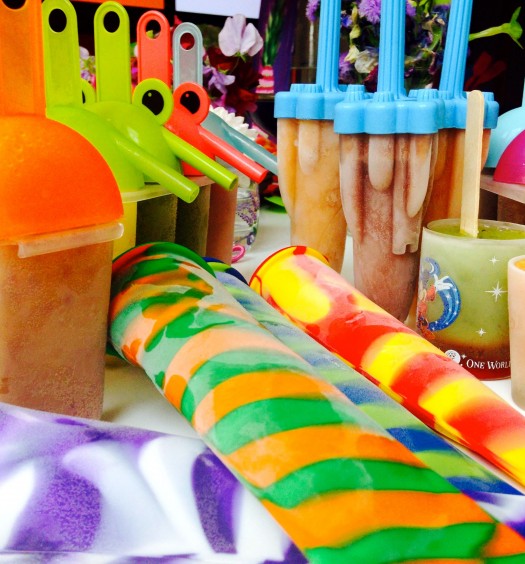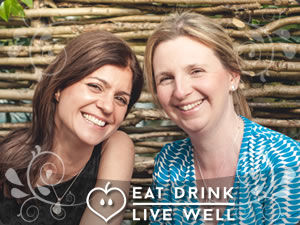It's a juicy debate.....
Whether or not drinking juice is good for us has been in the news a lot recently, and in fact our recent sugar blog sparked a bit of a debate between us on the pros and cons of drinking juice. So should we be drinking juice at all?
In many households kids drink juice or smoothies as a preference to additive-laden squash and fizzy drinks. Yet recent newspaper reports are equating a glass of juice with the sugar equivalent of a plate of donuts, an entire packet of biscuits, or even worse, the can of cola we’re trying so hard to steer clear of.
But, juice can be a good source of nutrients from vitamin C to phytonutrients including quercetin and carotene. And on a purely practical level I just wouldn’t be able to take my supplements without my morning juice – supplements and hot drinks don’t mix, and I struggle to swallow some of the larger tablets with just water alone.
So is juice drinking is a healthful thing to do each day or a sugary temptation to be avoided at all costs?
- Fruit juice is a concentrated sugar source – it contains no fibre so it raises blood sugar quickly. A glass of orange juice can easily contain three or more oranges. Rapid blood sugar fluctuations can lead to behavioural issues including hyperactivity, mood swings, fatigue, weight gain including childhood obesity, increased diabetes and heart disease risk. Having a large glass of juice with a bowl of processed cereal and toast in the morning is virtually guaranteed to get blood sugar flying.
- Introducing sugar to children early in the form of juice primes their taste buds to like sugary foods and drinks.
- Juices are high in a natural fruit sugar called fructose. The food industry uses this ‘healthy’ fruit sugar in many different foods (including colas, energy drinks, yogurts and biscuits) as it doesn’t impact our blood sugar in the same way as other sugars. But a high fructose diet also has health implications, and too much fructose in a short space of time burdens the liver (see our sugar blog for more info). If you don’t eat processed foods and drinks, your small glass of fruit juice a day really shouldn’t be much of an issue. But if you’re having a large glass of juice a day as well as other high fructose foods, then it could be a different story.
- Giving your kids packets of raisins and fruit juice is not going to put you in favour with your dentist, and increases the risk of damaged tooth enamel and tooth decay.
- Commercial juices can be from concentrate, pasteurised, rehydrated, and contain additives and preservatives – leaving you with an expensive, sugary fluid that’s a nutrient-free zone. Fruits and vegetables lose their nutrients rapidly once juiced; if you juice at home you’ll see the rapid change in colour once the juice ‘oxidises’. This is why Vitamin C is added to most commercial juices – not because the manufacturers want to up your vitamin C intake, but because they want to keep the juice an appetizing, rather than brown colour, and Vitamin C acts as an antioxidant.
We believe good juices can be a great addition to a healthy diet, if you get it right. So here are our top tips for healthy juice drinking:
- Keep fruit juice drinking to a maximum 150ml glass, of the best quality juice you can make or buy, (ideally freshly juiced) once a day and always with food. That way you’ll limit the effect on blood sugar but will be taking advantage of the nutrients and phytochemicals in the juice.
- Consider diluting juice with water (or have a glass of water alongside it) or switch to fibre-rich
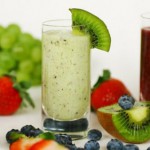 smoothies. If you add yogurt, silken tofu, oats, milk or nut milk, you’ll get even less of a blood sugar hit.
smoothies. If you add yogurt, silken tofu, oats, milk or nut milk, you’ll get even less of a blood sugar hit.
- Keep kids on water for as long as possible. A two year old who ‘refuses’ to drink water is likely
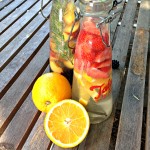 holding out for something sweeter he’s been offered before. Kids will drink water when they’re thirsty. There’s just no need to fill a sippy cup, or bottle, with juice. If you give them juice regularly, that’s what they’ll expect. If they really don’t like water, try infused water instead.
holding out for something sweeter he’s been offered before. Kids will drink water when they’re thirsty. There’s just no need to fill a sippy cup, or bottle, with juice. If you give them juice regularly, that’s what they’ll expect. If they really don’t like water, try infused water instead.
- Check out vegetable juice. Many vegetables are naturally sweet (e.g. beetroot, carrot, tomato) and
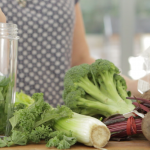 have a lower impact on blood sugar. If you can’t bring yourself totally go down the veggie juice route, mixing fruit and vegetables is a good start. Beetroot and apple, carrot, apple and ginger, cucumber and mint, spinach and pear all work well together. Home juicing or blending is the best option, but some box scheme suppliers now sell fresh fruit and vegetable juices.
have a lower impact on blood sugar. If you can’t bring yourself totally go down the veggie juice route, mixing fruit and vegetables is a good start. Beetroot and apple, carrot, apple and ginger, cucumber and mint, spinach and pear all work well together. Home juicing or blending is the best option, but some box scheme suppliers now sell fresh fruit and vegetable juices.
We hope you enjoy this blog post, let us know your thoughts in the comments below or on social media – we’re on Twitter, Facebook, Instagram and Pinterest. And don’t forget to sign up to our newsletter to receive a monthly update of our recipes, nutrition tips and expert advice.


